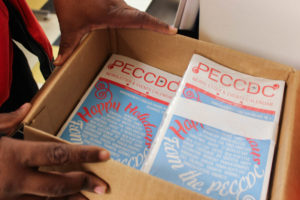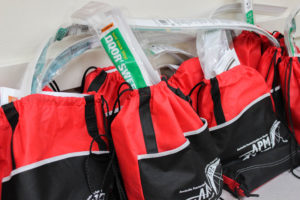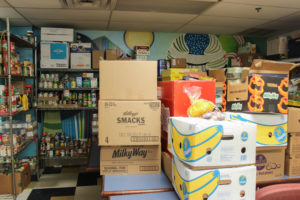These six organizations are improving their neighborhoods with help from Community Connectors
 January 2, 2020
Category: Featured, Long, Method, People
January 2, 2020
Category: Featured, Long, Method, People
“This neighborhood is ingrained in me,” said Dante Leonard, a father and Mantua resident. “I know stories from this neighborhood that will make you cringe. And I know stories of redemption from this neighborhood.”
Leonard grew up in Southwest Philadelphia and West Philadelphia. His grandmother’s house, which he helps manage as a rental property, has been passed from generation to generation.
Leonard became a Community Connector at the People’s Emergency Center (PEC), a community development corporation in West Philadelphia, in 2019. Like many other Connectors, Leonard’s has strong ties to his neighborhood.
The Community Connectors Program and Institute is a part of LISC Philadelphia’s community development efforts to engage neighborhood residents. LISC, a national community development organization, has offices across the country. LISC Philadelphia provides funding and technical assistance to the program, which is made up of six community-based organizations:
- Asociación Puertorriqueños en Marcha (APM)
- HACE CDC
- Impact Services Corporation
- New Kensington CDC (NKCDC)
- People’s Emergency Center
- The Village of Arts & Humanities
The organizations identify potential Connectors from their volunteers. When a volunteer accepts the position, they are referred to the institute.
“The two main objectives of the institute, which is a six-week workshop, is to try to teach the fundamentals of community development and then teach the Community Connectors what is their role within that,” said Verónica Ayala-Flores, a LISC Philadelphia program assistant, who leads the institute.
The program’s model has evolved since its creation in 2012 when the West Philadelphia nonprofit Enterprise Center formed “street teams” to engage with their residents. APM and PEC adopted the approach with support from LISC Philadelphia.
As the Connectors program continues, it offers a template for a community development model that empowers residents, organizations and youth. But the program’s operational demands are increasing.
Community Connectors respond to neighbor’s needs
The organizations serve residents in North Philadelphia and West Philadelphia. Connectors lead community improvement projects and engage with residents.
Before becoming an APM Connector in 2014, Lamont Jefferson was a trusted leader in his neighborhood from his work as a block captain and president of the Rainbow de Colores Playground Advisory Council. During the summer, Jefferson holds office hours for the community on his porch.
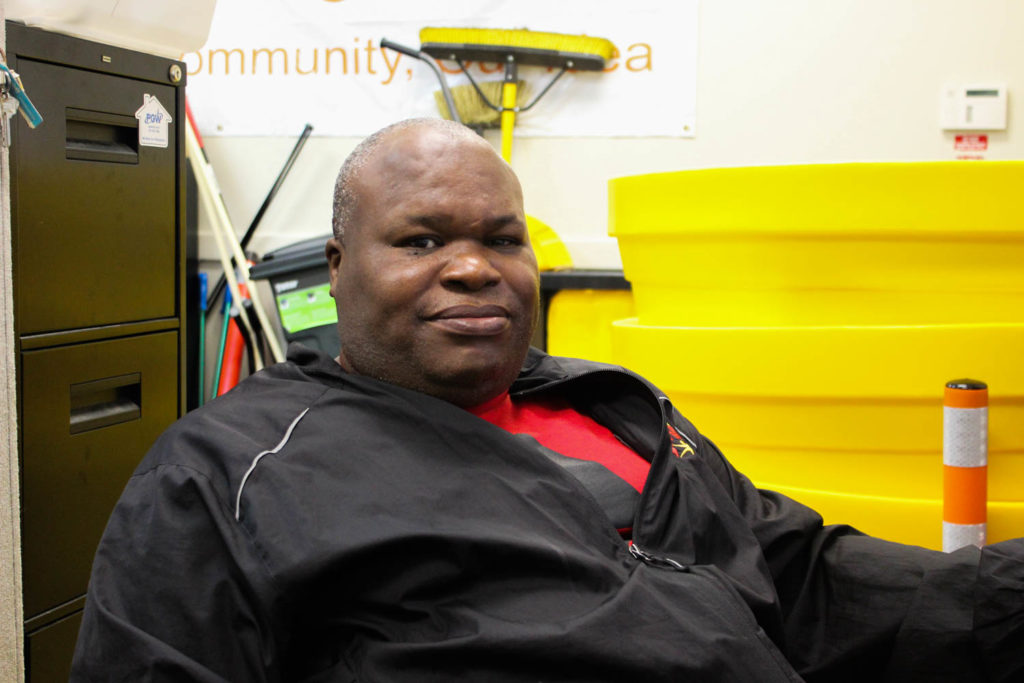
Lamont Jefferson, a Community Connector at Asociación Puertorriqueños en Marcha, sits by his desk at APM’s office in North Philadelphia. (Photo by Zari Tarazona)
“I always tell my connectors, ‘You got out there and you don’t know something. Tell them you’ll get back. Take their name and address or phone number,’” Jefferson said. Getting that information back to them builds trust, he added.
Connectors also help their organizations provide services related to affordable housing, employment, food insecurity and much more.
In December, APM began the third year of its Weatherization Workshop. Connectors, APM staff and volunteers go to participating houses with supply kits, which includes door sweeps, to seal gaps, and window shrink film, to prevent drafts.
Iliana Dominguez-Franco, director of sustainable communities initiatives at APM, said the teams weatherize about 40 houses each year and the supplies are collected through in-kind donations from home-improvement stores.
“And that all came out of just Connectors taking initiative and being like, ‘Look, we have a senior, and I found this neighbor who had extra shrink wrap. And so like, can I take a team out?’ That’s how it started,” added Dominguez-Franco, who supervises APM Connectors.
Andrew Frishkoff, LISC Philadelphia executive director, said Connectors are a community resource that can address a number of issues that residents identify as needs.
To address food deserts in West Philadelphia, PEC runs a Food Cupboard every Saturday from 10:30 a.m. to 1:30 p.m. at 325 N. 39th Street.
Derrick Pratt, a Mantua resident and PEC Connector since 2018, supervises the Food Cupboard and PEC Connectors. At the Food Cupboard, people can eat a hot meal from the soup kitchen and learn about resources while they wait for their turn to pick out items from the food line.
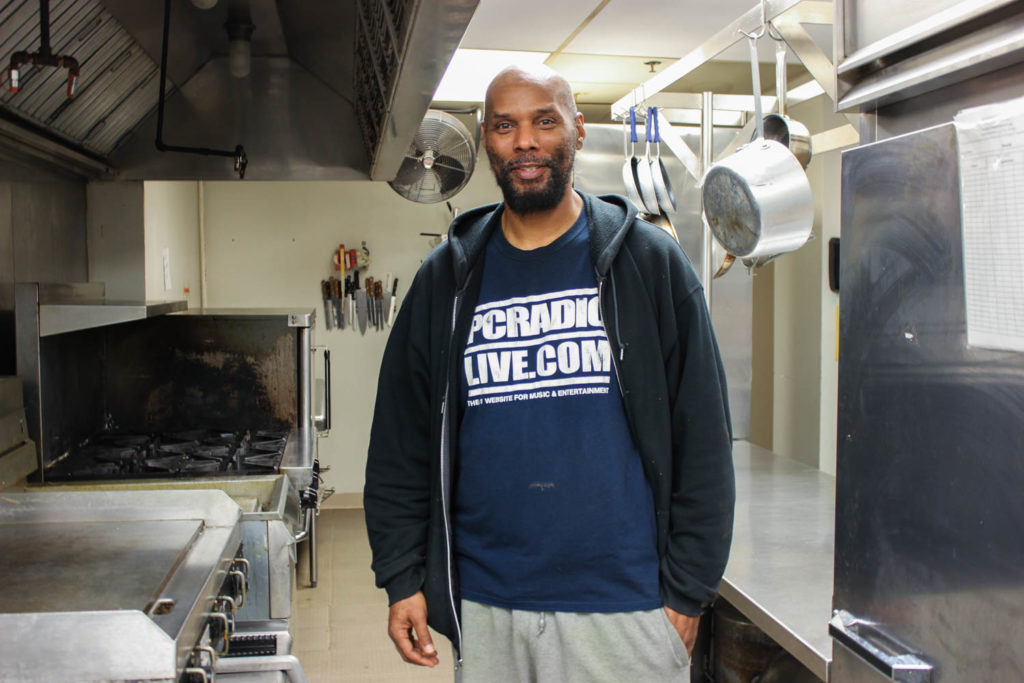
Derrick Pratt, a Community Connector at People’s Emergency Center, stands in the kitchen that he runs and supervises for PEC’s Food Cupboard where people can pick out items from a food line and get a hot meal every Saturday. (Photo by Zari Tarazona)
“We line it up because we don’t want food to go to waste or give someone some food that they may be allergic to or not want,” Pratt said. “And the next person who needs that food is unable to get it because we pre-bagged it and gave it up.”
The Food Cupboard serves 40 to 60 people a week on average. The food donations, which includes fresh produce, are collected from Philabundance, Aldi, Fresh Grocer, Giant and Save A Lot.
Community Connectors: What’s working?
In 2019, LISC Philadelphia wanted to understand what was and wasn’t working regarding the program, Ayla-Flores said. The organization surveyed 13 Connectors, interviewed two organization leaders and held three focus groups.
The Connectors reported a significant increase in their community development skills after going through the program. The organization leaders reaffirmed those responses and shared that the Connectors helped with community engagement, resident feedback and mapping assets and defining needs.

Cass Green, community engagement project manager at New Kensington CDC, previously worked at People’s Emergency Center and supervised Community Connectors. (Photo by Ken McFarlane)
Cass Green oversaw the Connectors at PEC for several years until she accepted the community engagement project manager position at NKCDC. Green said Connectors have a wealth of institutional knowledge about their communities.
“They know the nuances of their own blocks and communities on a granular level, so I think that’s probably the biggest impact of the opportunity,” Green said. “And if you have residents participating in that effort, it makes other residents want to come close and be engaged.”
Elsa Falkenburger, a senior research associate at the Urban Institute, a nonprofit research organization, said investing in a community and building from existing strengths is a key component that isn’t always acknowledged when determining effective models.
“What I think we can learn from the LISC model is how valuable it is to have somebody just providing that sustainability, remaining committed to all of those organizations, but really just providing the support and the regularity that’s needed,” Falkenburger added.
Some challenges to this work are sustainability, funding and being responsive to what people bring up, Falkenburger added.
LISC Philadelphia wrote in an email to Generocity stating that their biggest challenge is keeping up with operational demands as the needs of program and institute evolve and more residents are engaged.
"Most immediately, we'd welcome financial support to allow Connectors to meet the increasing needs of their fellow residents."
“Building on the trust the Connectors Program has created over the years, program staff, connectors, and LISC are continuously approached with ideas for making neighborhoods safer and more engaged,” LISC Philadelphia added.
During this year’s institute, Connectors shared some of those ideas like a symposium on literacy, but most of the ideas are funding dependent and one-off events, LISC Philadelphia wrote.
When asked if the City of Philadelphia, City Council or Philadelphia’s state legislators could provide support, LISC Philadelphia wrote that they’re always looking for new ways to work with government agencies and officials.
“Most immediately, we’d welcome financial support to allow Connectors to meet the increasing needs of their fellow residents,” LISC Philadelphia added.
City Councilmember Jamie Gauthier, who represents Philadelphia’s 3rd District, said supporting the program is definitely something to look at.
“There would be a budget discussion around this, but we’ve stated before that we want to be the most civically engaged city in the country,” said Gauthier, who worked at LISC Philadelphia from 2004 to 2013 and served as the keynote speaker for the institute graduation ceremony in November 2019. “This is a wonderful way of civic engagement and of connecting residents to resources that the city has.”
“The impact of the program is the ability to have this very deep tie to what residents think and what they want and what they need in a way that empowers residents and helps them to engage and connect to what’s happening in the neighborhood,” Gauthier added. “But also in a way that improves the work of the nonprofits who are looking to advance neighborhoods.”
The program is a resource for younger Connectors as well.
Rodney Mobley, an outreach and engagement specialist at NKCDC, who grew up in West Philadelphia, was previously a community connector and engagement coordinator at PEC.
“I can go on and on about where I came from and how this opportunity has changed my life, but my focus is on how valuable it is to provide opportunity for youth who are most at risk for violence/criminal activity, and put a spotlight on how much youth have to offer to the communities they live in,” Mobley wrote in an email to Generocity adding that Community Connectors is a culture not just a program or job.
I became a Connector because…
At the beginning of the institute’s workshop, Ayla-Flores asks the Connectors a question: Why are you a Community Connector?
“I wanted to be a Connector to help in the community and to give my neighbors resources of what’s going on in the community and then to help the youth,” Jefferson said.
Ahmiir Jefferson, 18, an APM Connector and Lamont Jefferson’s nephew, said he chose to be a Connector because he likes meeting new people. He started volunteering at APM when he was 12 years old.
“Now that I’m older, and I got to really work with them, I really get to go around more and meet other people from different neighborhoods to help them out,” Ahmiir said.
“I became a connector because I wanted to give back to the community and help out as much as possible,” said Tiffany Nguyen, 22, a Southwest Philadelphia resident, who was a PEC Connector from 2015 to 2017.
Pratt, who started PC Radio Live, an internet radio station, has always been a presence in his neighborhood from helping throw his mother’s annual block party to organizing a block party with a school supply drive.
“I feel like I’m the bridge between the community and the resources,” Pratt said. “So I use myself as that bridge that face to go out and let them know that these resources are here for you.”
“I want my community to know what’s here for them, and they don’t have to feel like they’re being ran out of their neighborhoods,” Pratt added.
Luz Crespo, a school crossing guard, community doula and an APM Connector since 2013, has lived in North Philadelphia for about 60 years. As a Connector, Crespo has worked on several neighborhood projects involving community gardens and neighborhood beautification.
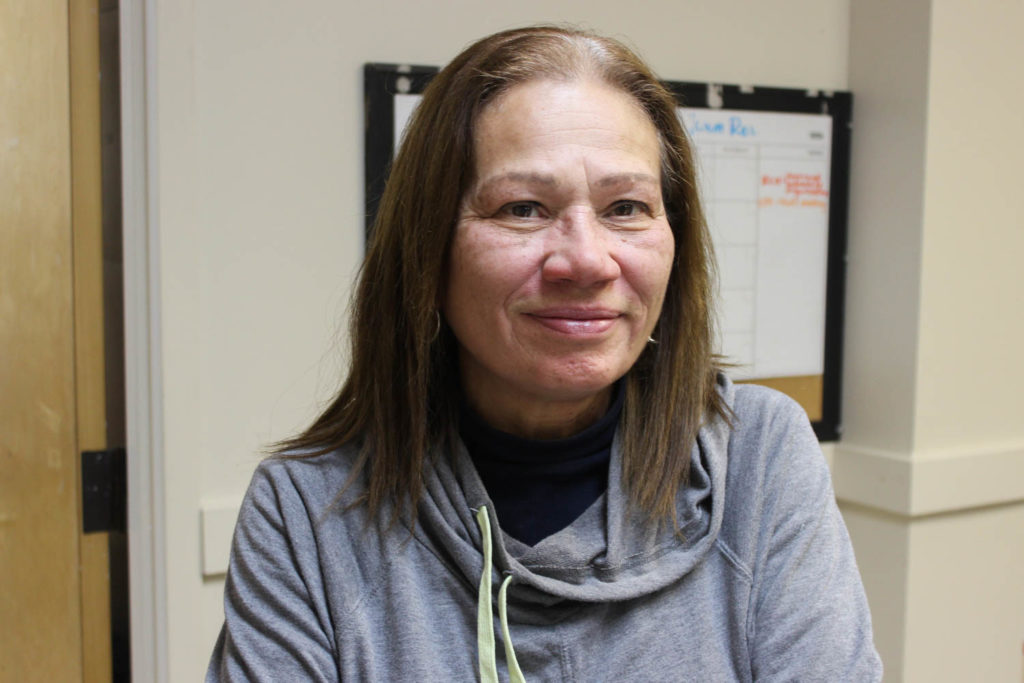
Luz Crespo, a Community Connector at Asociación Puertorriqueños en Marcha, stands in APM’s office before heading to her other job as a school crossing guard. (Photo by Zari Tarazona)
Crespo said the Community Connectors sounded interesting because she’d be working in her community.
“It really helped me to spread my wings out with people and with organizations,” Crespo added.
Melinda Martínez, a wife, mother and North Philadelphia resident, has been an APM Connector for several years. A knock on Martinez’s door from an APM Connector asking residents about food insecurity led her to the program.
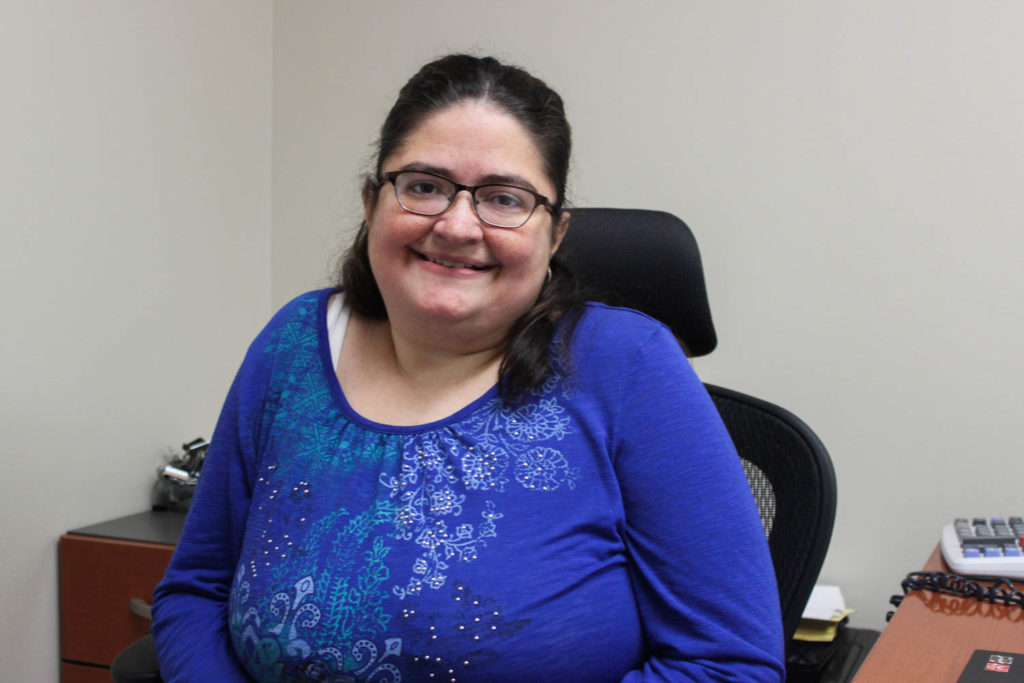
Melinda Martinez, a Community Connector at Asociación Puertorriqueños en Marcha, sits by her desk at APM’s office in North Philadelphia. (Photo by Zari Tarazona)
“I was a teacher for a while and that was good, but I think deep inside I always wanted to do more like social work,” said Martinez, who was a stay-at-home mom when she started volunteering for APM. “So when this Connector program came in, it really like just hit home.”
Leonard said knocking on doors and giving community members PEC’s newsletter, which is filled with resources and upcoming events, attracted him the most to the program
“This is my community,” Leonard said. “I’m not in South Philadelphia saying I’m going knocking on doors. I probably wouldn’t want to do it down there. But here is where I’m from.”
Trending News







